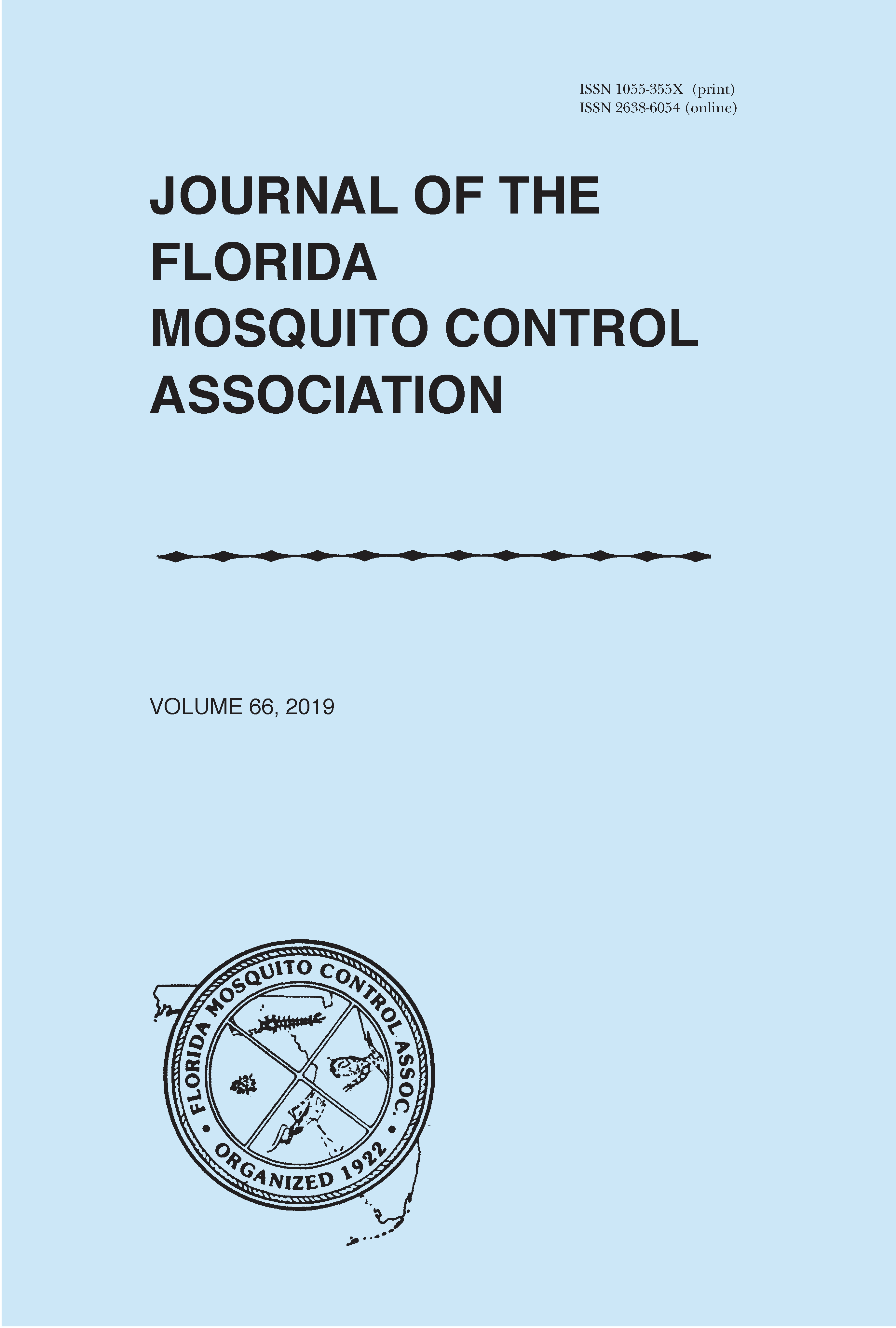AEDES AEGYPTI OVIPOSITION DIFFERENCES AMONG ORNAMENTAL BROMELIADS WITH VARIABLE WATER LEVELS
DOI:
https://doi.org/10.32473/jfmca.v66i1.127613Abstract
Aedes aegypti (L.) have recurrently been emphasized as a critical vector amidst the emergence, and re-emergence, of various anthroponoses. Bromeliads have been incriminated as an Ae. aegypti refuge. To investigate this, common ornamental bromeliads in the genera Guzmania, Neoregelia, and Vriesea were used in oviposition bioassays with Ae. aegypti. No choice assays were conducted with all three plant types alongside variations in water level, approximated as low, medium, or high based on a 25%, 50%, and 75% capacity. Gravid Ae. aegypti tended to deposit eggs in leaf axils of Neoregelia more than the central bowl, or tank. In contrast, Guzmania collected more eggs in the central bowl, and collected the most eggs when water levels were high. No other trends based on water level were apparent across the other types. Vriesea collected few eggs regardless of location or water level. Neoregelia collected more eggs overall, implicating this type of bromeliad is potentially suitable to Ae. aegypti. This was a preliminary investigation into the role of bromeliads for Ae. aegypti oviposition. However, even when mosquitoes were not allowed a choice, there were clear differences in egg deposition between bromeliad types. More information is needed that partitions the role of different bromeliads for the vectors of concern. Future operations and education should prioritize the bromeliads that have a clear connection with the target mosquitoes, particularly in light of controversy about the role bromeliads may play in mosquito-borne disease outbreaks.

